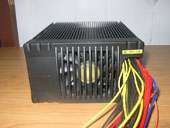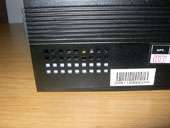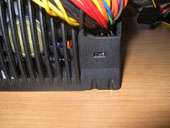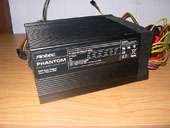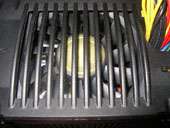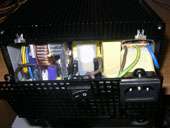- Qualcomm Launches Snapdragon 4 Gen 2 Mobile Platform
- AMD Launches Ryzen PRO 7000 Series Mobile & Desktop Platform
- Intel Launches Sleek Single-Slot Arc Pro A60 Workstation Graphics Card
- NVIDIA Announces Latest Ada Lovelace Additions: GeForce RTX 4060 Ti & RTX 4060
- Maxon Redshift With AMD Radeon GPU Rendering Support Now Available
Antec Phantom 500W Power Supply
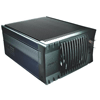
Power supplies are an important part of our PC and should never be overlooked. Antec is one of the top makers in the market, due to their stability and build quality. We are taking a look at their 500W Phantom and see how it stands up to a Dual Core system.
Page 2 – Specifications
For those of you who thrive on specifics, here is info you will find useful:
- ATX12V version 2.01 compliant with 24-and-20-pin adapter connector with detachable 4-pin section for 20-pin for backward compatibility with older motherboards
- Dual +12V outputs, with dedicated circuits to isolate the CPU power line from peripherals.
- Hybrid fan design
- Exceptional power efficiency up to 86% (US version) at full load
- 4 Serial ATA power connectors
- PCI-E graphic card power connector[s]
- Fanless operation for absolutely silent computing. Three user selectable fan kick-in points for quiet computing under higher loads: 40, 47.5, or 55 degrees C.
- Specially designed internal heatsinks and chassis heatsink for maximum heat dissipation
- ATX12V v2.0 compliance and ultra-high-efficiency design (up to 85%) allows Phantom to generate up to 70% less heat and consume 25% less power than standard PSU’s saving you money on your electric bill
- Power Factor value greater than 90% (EU only)
- Gold plated connector for superior conductivity
Output: 500 Watts total |
||||||
| +5V | +12V1 | +12V2 | +3.3V | -12V | +5Vsb | |
| Max. Load | 30A | 17A | 18A | 30A | 0.5A | 2.0A |
| Min. Load | 0.3A | 0.3A | 0.3A | 0.3A | 0A | 0A |
| Load Reg. | ±5% | ±5% | ±5% | ±5% | ±5% | ±5% |
| Rippe V(p-p) | 50 | 120 | 120 | 50 | 120 | 50 |
Overall, these specs represent kick ass and it’s a pleasure to have such quality in my system. When I had first powered up the PSU without a PC, it was as I had expected.. dead quiet. Since I threw this in my Intel machine, the low noise won’t help me as much due to the Stock Intel cooler being so dang loud, but it’s certainly nice to have the PSU not add to the fact. During my stress tests with the Phantom, I regularly checked to see if the back fan was running. Not once did I catch it running, which goes to show that the heatsink design does a great job of dissipating the heat before it get’s to that point. It could have been running at certain points without my knowledge, but it’s hard to tell even with your hand in front of it whether it’s actually on or not.
Another thing to mention is that this PSU is very heavy, but as many know, the heavier the PSU is the more likely it is to be better. Heavy duty components will definitely aide in the life and stability of the product. Though I did not weigh it, I would recommend you have a friend help you install it. Not because it’s too heavy, but because it’s heavy enough that when you are ‘screwing’ around trying to get it installed, it is somewhat of an annoyance.
Now that we have all of that out of the way, let’s jump straight into the stress testing.
|
|
Support our efforts! With ad revenue at an all-time low for written websites, we're relying more than ever on reader support to help us continue putting so much effort into this type of content. You can support us by becoming a Patron, or by using our Amazon shopping affiliate links listed through our articles. Thanks for your support!




